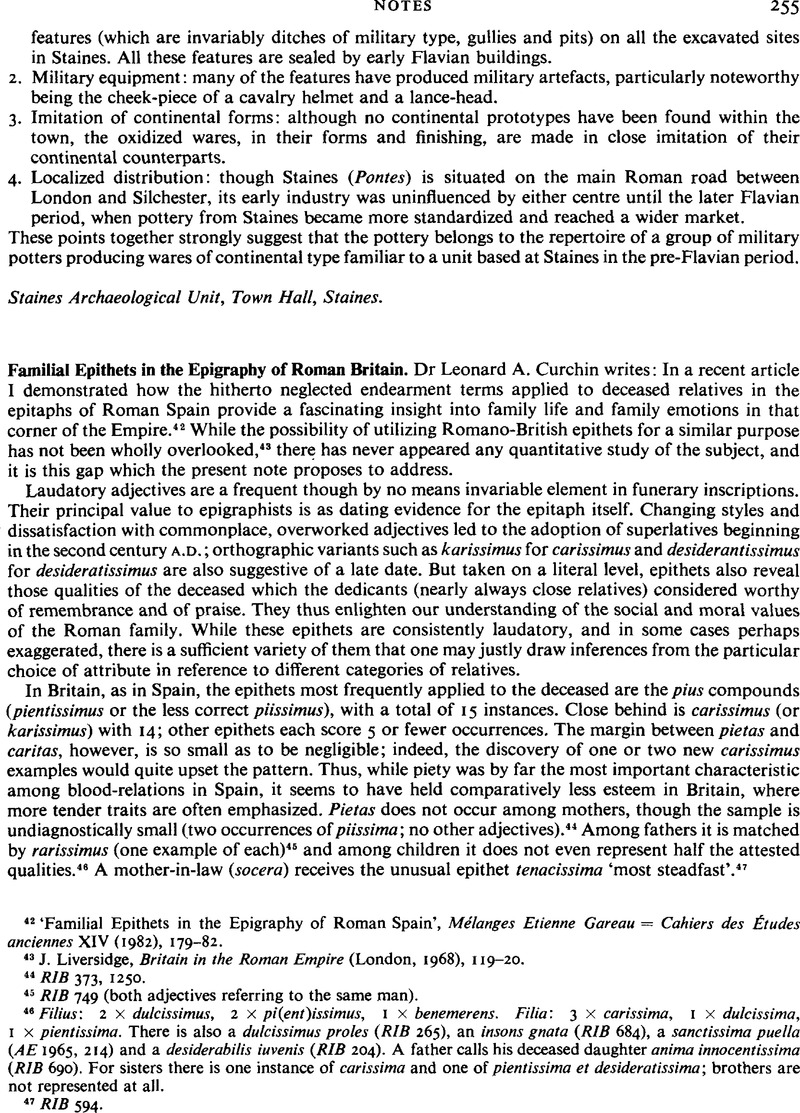Article contents
Familial Epithets in the Epigraphy of Roman Britain
Published online by Cambridge University Press: 09 November 2011
Abstract

- Type
- Notes
- Information
- Copyright
- Copyright © Leonard A. Curchin 1983. Exclusive Licence to Publish: The Society for the Promotion of Roman Studies
References
42 ‘Familial Epithets in the Epigraphy of Roman Spain’, Mélanges Etienne Gareau = Cahiers des Études anciennes XIV (1982), 179–82.Google Scholar
43 Liversidge, J., Britain in the Roman Empire (London, 1968), 119–20.Google Scholar
44 RIB 373, 1250.
45 RIB 749 (both adjectives referring to the same man).
46 Filius: 2 × dulcissimus, 2 × pi(ent)issimus, 1 × benemerens. Filia: 3 × carissima, 1 × dulcissima, 1 × pientissima. There is also a dulcissimus proles (RIB 265), an insons gnata (RIB 684), a sanctissima puella (AE 1965, 214) and a desiderabilis iuvenis (RIB 204). A father calls his deceased daughter anima innocentissima (RIB 690). For sisters there is one instance of carissima and one of pientissima et desideratissima; brothers are not represented at all.
47 RIB 594.
48 Another dedication (RIB 250) is made to a coniux ob merita.
49 RIB II; AE 1977, 510; RIB 633.
50 RIB 620.
51 RIB 15, 680; libertus, RIB 559.
52 RIB 681, 937.
53 RIB 749, 1829, 2006.
54 RIB 594, 1062, 1256.
55 Tod, M. N., BSA xlvi (1951), 189 n. 28.Google Scholar
56 RIB 17, 372, 375, 620, 687, 2029.
57 RIB 684, 931.
58 AE 1969–70, 293; RIB 369.
59 RIB 620.
- 2
- Cited by


